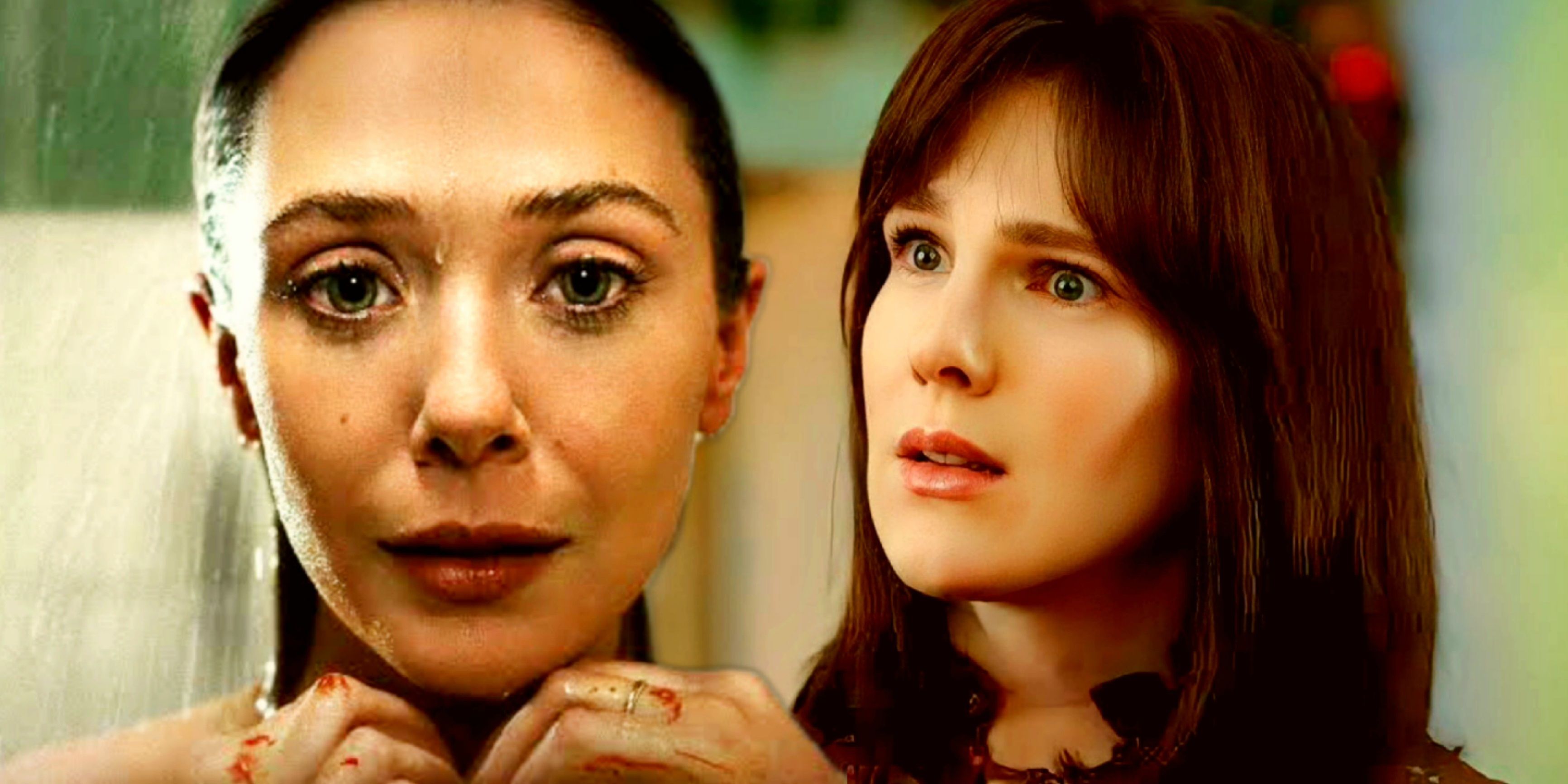RealGore has become a buzzword in recent years, sparking heated debates, raising ethical concerns, and captivating the morbid curiosity of millions around the globe. Whether you’re an accidental explorer or someone who’s genuinely intrigued by the darker side of human fascination, this topic demands attention. It’s not just about shocking imagery; it’s about understanding why such content exists, how it spreads, and what it means for society.
Let’s face it—humans are naturally drawn to the unusual, the bizarre, and sometimes even the grotesque. From ancient tales of mythological monsters to modern-day internet rabbit holes, our curiosity knows no bounds. RealGore represents one of those areas where curiosity meets controversy, and that’s what makes it so compelling yet unsettling at the same time. But why does it exist? And more importantly, why do people consume it?
As we dive deeper into this topic, you’ll discover the history behind RealGore, its impact on mental health, the legal implications surrounding it, and how platforms deal with its distribution. This isn’t just another clickbait article—it’s a comprehensive guide designed to answer your questions while keeping you informed and engaged. So, buckle up because this ride gets intense!
Read also:Hilaria Baldwins Journey To Healing After Miscarriage
Here’s a quick roadmap of what we’re covering:
- What Is RealGore?
- The History of RealGore
- Psychology Behind RealGore Consumption
- RealGore and Mental Health
- Legal Issues Surrounding RealGore
- How Platforms Regulate RealGore
- RealGore vs Fictional Content
- Ethical Considerations
- Current Trends in RealGore
- Conclusion: Is RealGore Here to Stay?
What Is RealGore?
Alright, let’s get straight to the point—what exactly is RealGore? Simply put, RealGore refers to any form of graphic, uncensored, and often disturbing content depicting real-life violence, accidents, death, or injuries. Think car crashes, war footage, animal cruelty, or even executions. It’s not something you’d typically stumble upon during a casual scroll through social media (unless, of course, you’re really digging deep).
Now, before you freak out, it’s worth noting that not all RealGore is created equal. Some people use the term loosely to describe anything shocking, while others reserve it for hardcore, explicit material. It’s like the Wild West of the internet—there are no rules, no filters, and definitely no shortage of controversy.
Why Does RealGore Exist?
Here’s the thing—RealGore exists because humans have always been fascinated by death, destruction, and the unknown. Think about ancient gladiator battles or public executions—they were forms of entertainment back in the day. Fast forward to today, and the internet has made it easier than ever to access this type of content. Whether it’s for educational purposes, journalistic integrity, or plain old curiosity, RealGore continues to thrive.
The History of RealGore
RealGore didn’t just pop up overnight. Its roots go way back to the early days of photography and film. During World War I and II, soldiers captured harrowing images of battlefields, which eventually found their way into newspapers and magazines. These photos shocked the world and changed the way people perceived war.
Fast forward to the digital age, and RealGore took on a whole new meaning. With the rise of platforms like YouTube, Reddit, and 4chan, sharing graphic content became as easy as clicking a button. Suddenly, anyone with an internet connection could access footage of car crashes, medical procedures, or even crime scenes. It’s like opening Pandora’s box—once you peek inside, there’s no going back.
Read also:Diane Keatons Unlikely Journey From Cheerleading Dreams To Hollywood Stardom
Key Moments in RealGore History
- The release of the Zapruder film showing JFK’s assassination
- War footage from Vietnam and Iraq
- The viral spread of animal cruelty videos in the early 2000s
- Modern-day leaks of high-profile incidents
Psychology Behind RealGore Consumption
So, why do people watch RealGore? Is it just morbid curiosity, or is there something deeper going on? Turns out, psychologists have been studying this phenomenon for years, and the answers might surprise you.
One theory suggests that humans are hardwired to pay attention to danger. Our ancestors relied on recognizing threats to survive, and that instinct still lingers today. Another possibility is that some people consume RealGore to desensitize themselves or cope with trauma. Whatever the reason, it’s clear that our brains are wired to seek out the unusual.
Common Reasons People Watch RealGore
- Morbid curiosity
- Educational purposes
- Journalistic interest
- Desensitization or trauma coping
RealGore and Mental Health
Let’s talk about the elephant in the room—how does consuming RealGore affect mental health? While it might seem like harmless entertainment to some, research shows that repeated exposure to graphic content can lead to anxiety, depression, and even PTSD. It’s like watching a horror movie on repeat—eventually, it starts to mess with your head.
That being said, not everyone reacts the same way. Some people can handle it without issue, while others may experience long-term effects. It all comes down to individual tolerance and mental resilience. If you’re someone who’s easily triggered, it might be best to steer clear of RealGore altogether.
Signs You Should Take a Break from RealGore
- Feeling anxious or on edge
- Having trouble sleeping
- Experiencing vivid nightmares
- Feeling emotionally numb
Legal Issues Surrounding RealGore
Now let’s tackle the legal side of things. Is RealGore even legal? The answer depends on the content itself and where you’re located. In most countries, distributing explicit material without consent is against the law. However, the line between legal and illegal can get blurry when it comes to documentary footage or historical archives.
For example, showing graphic images of war might be considered journalism, but sharing a violent crime scene could land you in hot water. It’s all about context, intent, and whether the content serves a greater purpose. That’s why platforms like YouTube and Reddit have strict guidelines around what’s allowed and what’s not.
Key Legal Considerations
- Consent from individuals depicted
- Purpose of the content (educational vs. entertainment)
- Local laws and regulations
- Platform-specific rules
How Platforms Regulate RealGore
Speaking of platforms, how exactly do they handle RealGore? Most major sites have implemented AI moderation tools to flag and remove graphic content automatically. However, these systems aren’t perfect and sometimes miss things or flag innocent posts by mistake.
That’s where human moderators come in. Teams of dedicated professionals review flagged content to determine whether it violates community guidelines. It’s a thankless job, but someone’s gotta do it. And let’s not forget—the platforms themselves are under constant pressure to balance free expression with user safety.
Challenges Facing Platform Moderators
- Identifying legitimate vs. harmful content
- Dealing with cultural differences
- Managing user complaints
- Staying ahead of tech-savvy content creators
RealGore vs Fictional Content
Let’s compare apples to oranges for a moment—how does RealGore stack up against fictional gore? While both can be equally disturbing, there’s a key difference: RealGore depicts actual events, while fictional content is, well, made up. This distinction is crucial when it comes to impact and intent.
For instance, watching a horror movie might give you chills, but you know it’s not real. On the other hand, viewing a RealGore video can leave a lasting impression because it’s grounded in reality. That’s why so many people are drawn to it—it’s raw, unfiltered, and undeniably real.
Ethical Considerations
Before we wrap things up, let’s touch on the ethics of RealGore. Is it morally okay to consume this type of content? Does it exploit the victims depicted? These are tough questions with no easy answers. On one hand, RealGore can serve as a powerful reminder of the consequences of war, violence, and neglect. On the other hand, it can also perpetuate a cycle of exploitation and desensitization.
Ultimately, it’s up to each individual to decide where they draw the line. If you choose to engage with RealGore, do so responsibly and with respect for those involved. Remember, every click has consequences.
Current Trends in RealGore
So, what’s trending in the world of RealGore right now? Believe it or not, there’s an entire subculture dedicated to collecting and sharing this type of content. From underground forums to private Discord servers, enthusiasts are constantly seeking out the next big thing. Some even consider themselves “curators,” carefully selecting and preserving rare footage for future generations.
Of course, not everyone approves of this trend. Critics argue that it glorifies violence and dehumanizes victims. Supporters, however, claim it’s a vital part of documenting history and raising awareness. As with most things, the truth probably lies somewhere in the middle.
Conclusion: Is RealGore Here to Stay?
There you have it—a comprehensive look at the world of RealGore. Whether you love it, hate it, or just don’t get it, there’s no denying its impact on society. From its historical roots to its modern-day controversies, this topic continues to spark debate and curiosity worldwide.
As we move forward, it’s important to approach RealGore with both caution and understanding. While it may not be for everyone, it serves as a powerful reminder of the complexities of human nature. So, the next time you’re tempted to click that link, take a moment to consider why you’re doing it—and whether it’s worth the potential consequences.
Got thoughts on RealGore? Drop a comment below and let’s keep the conversation going. And hey, if you enjoyed this article, don’t forget to share it with your friends. Knowledge is power, after all!



